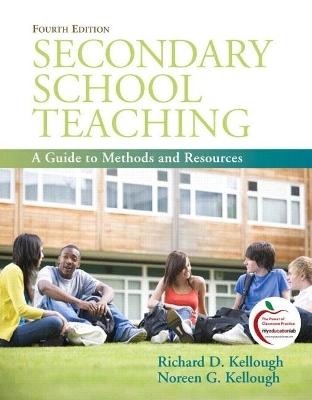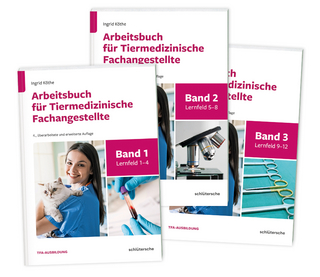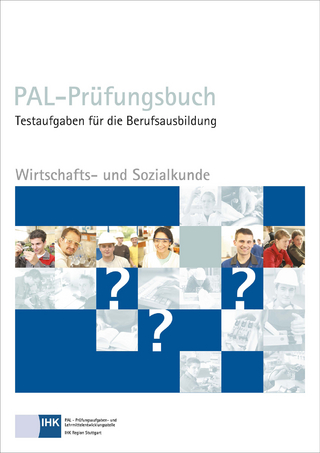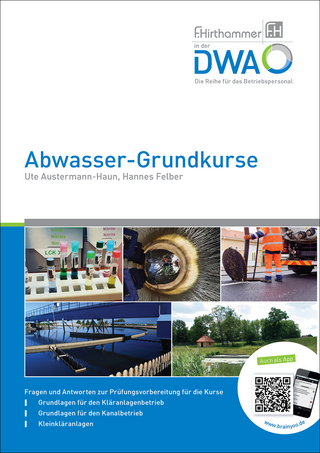
Secondary School Teaching
Pearson (Verlag)
978-0-13-704977-6 (ISBN)
This text provides a sound introduction to the challenges of today's secondary schools, teachers' professional responsibilities, thinking and questioning, classroom environment, curriculum, planning instruction, assessment using inquiry, teacher talk, and games, learning alone and in groups, and professional development. A key strength of this text continues to be the expression of core themes. It provides future and current teachers with relevant guidelines, best options and practices, the most useful research findings, and current resources so that they can reflect and improve their effectiveness.
Richard Kellough is author and coauthor of more than 50 textbooks, including A Primer For New Principals: Guidelines For Success (Rowman & Littlefield, 2008), A Resource Guide For Teaching K-12, 6/E (Allyn & Bacon, 2011), Teaching Young Adolescents: Methods And Resources, 5/E (Pearson, 2008), Teaching And Learning K-8: A Guide To Methods And Resources, 9/E (Pearson, 2008), Your First Year Of Teaching: Guidelines For Success, 5/E (Pearson, 2009), Science K-8: An Integrated Approach, 11/E (Allyn & Bacon, 2008), and A Guide For Developing Interdisciplinary Thematic Units, 4/E (Pearson, 2008), as well As numerous journal articles. His many recognitions include being named a National Science Foundation Research Fellow at The University Of California, Davis, as well as listings in the International Authors And Writers Who's Who, Leaders In Eco Education, Men Of Achievement (Vol. 1), Dictionary Of International Biography, and Leaders In Education. His 46-year teaching career includes 13 years as a teacher of grades 7-12 (3 years as a teaching principal) and 34 years as university professor. Coauthor of Teaching Young Adolescents: A Guide To Methods And Resources, 5/e (Allyn & Bacon, 2008), Noreen Kellough's 22-year teaching career includes 6 years of middle school foreign languages teaching, 6 years of high school teaching of French, and 12 years at the university level. At the college and university level she has taught Spanish at Los Rios Community College, was assistant clinical professor at University of the Pacific, and at California State University, Sacramento, taught Italian, courses in teacher preparation. Until her retirement, she served as director of the children's reading program where she supervised the training of university students as tutors of reading for public school children. Recognitions include recipient of Outstanding Community Service Award (2004) from CSU,S, and 1995 delegate representing the U.S. in Berlin, Germany, at the Deutsche Schreberjugend International Youth Conference.
CHAPTER 1: Secondary School Teaching Today: Recognizing and Understanding the Challenge The Classroom in a Nation of Diversity and Shifting Demographics
Skill Areas Around Which This Resource Guide is Centered
The Realities of Teaching Today
A Rather Recent and in Our Opinion Unfortunate Addition to the Challenge
Orientation: No Single Shoe Fits All
Start of the School Year Orientation
The School Year and Teachers’ Schedules
Teaching Teams
The Community of Learners Concept
Nontraditional Scheduling
Quality Education for Every Student
Instruction that is Differentiated
Responsive Practices for Helping Each Student Succeed
Middle-Level Schools
High Schools
The Fundamental Characteristic of Quality Education
Committed Teachers
Reflective Decision Making
School Leadership
Effects of No Child Left Behind Legislation
Parents, Guardians, and the Community
Community Service Learning
The Emergent Overall Picture: Current Actions, Trends, Problems, and Issues
Key Trends and Positive Practices
Major Problems, Concerns, and Issues
Meeting the Challenge: Initial Guidelines for Recognizing and Providing for Student Differences Thereby Effectively Differentiating the Instruction
Reviewing The Developmental Characteristics of Young People of Particular Age Groups
Young Adolescents (Ages 9–14)
Older Adolescents (Ages 15–19)
Summary
Questions for Class Discussion
Exercises
References
CHAPTER 2: Teacher Professional Responsibilities
The Teacher as a Reflective Decision Maker
Decision-Making Phases of Instruction
Reflection, Locus of Control, Sense of Self-Efficacy, and Teacher Responsibility
Selected Legal Guidelines
Student Rights
Cellular Phones and Other Handheld Electronic Devices in the Classroom
Teacher Liability and Insurance
Student Safety Should Always be on Your Mind
Teaching Style
Multilevel Instruction, Individualized Instruction, and Differentiated Instruction: A Clarification of Terms
The Theoretical Origins of Teaching Styles and Their Relation to Constructivism
Commitment and Professionalism
Noninstructional Responsibilities
Instructional Responsibilities
Identifying and Building Your Instructional Competencies
Characteristics of the Competent Classroom Teacher: An Annotated List
Teacher Behaviors Necessary to Facilitate Student Learning
Three Basic Rules for Becoming a Competent Teacher
Facilitating Behaviors and Instructional Strategies: A Clarification
Structuring the Learning Environment
Accepting and Sharing Instructional Accountability
Demonstrating Withitness and Overlapping
Providing a Variety of Motivating and Challenging Activities
Modeling Appropriate Behaviors
Facilitating Student Acquisition of Data
Creating a Psychologically Safe Environment
Clarifying Whenever Necessary
Using Periods of Silence
Questioning Thoughtfully
Tools For Instruction
The Internet
Professional Journals and Periodicals
The ERIC Information Network
Copying Printed Materials
The Classroom Writing Board
The Classroom Bulletin Board and Other Nonprojected Visual Displays
The Community as a Resource
Guest Speaker or Presenter
Field Trips
Media Tools
Computers and Computer-Based Instructional Tools
Using Copyrighted Video, Computer, and Multimedia Programs
Distance Learning
Summary
Questions For Class Discussion
Exercises
References
CHAPTER 3: Thinking and Questioning: Skills for Meaningful Learning
Teaching Thinking for Intelligent Behavior
Characteristics of Intelligent Behavior
Direct Teaching for Thinking and Intelligent Behavior
Purposes for Using Questioning
Questions to Avoid Asking
Types of Cognitive Questions: A Glossary
Analytic Question
Clarifying Question
Convergent-Thinking Question
Cueing Question
Divergent-Thinking Question
Evaluative Question
Focus Question
Probing Question
Socratic Questioning
Levels of Cognitive Questions and Student Thinking
Guidelines for Using Questioning
Preparing Questions
Implementing Questioning
Using an Audience Response Student Clicker System
Questions From Students: The Question-Driven Classroom and Curriculum
Questioning: The Cornerstone of Critical Thinking, Real-World Problem Solving, and Meaningful Learning
Summary
Questions For Class Discussion
Exercises
References
CHAPTER 4: The Classroom Learning Environment
The Importance of Perceptions
Classroom Control–Its Meaning–Past and Present
Historical Meaning of Classroom Control
Today’s Meaning of Classroom Control and the Concept of Classroom
Management
Classroom Management: Contributions of Some Leading Authorities
Developing Your Own Effective Approach to Classroom Management
Providing a Supportive Learning Environment
Consider the Physical Layout
Create a Positive Ambiance Behaviors to Avoid When Using Encouragement to Motivate Students
Get to Know Your Students as People
Preparation Provides Confidence and Success
Effective Organization and Administration of Activities and Materials
Natural Interruptions and Disruptions to Routine
Classroom Procedures and Guidelines for Acceptable Behavior
Starting the School Term Well
Procedures Rather Than Rules; Consequences Rather Than Punishment
The First Day
Procedural Matters: What Students Need to Understand Early On
Using Positive Rewards as Motivators
Managing Class Sessions
Opening Activities
Smooth Implementation of the Lesson
Transitions Within Lessons
Inappropriate Student Behavior
Transient Nondisruptive Behaviors
Disruptions to Learning
Defiance, Cheating, Lying, and Stealing
Bullying, Fighting, Sexual Misconduct, and Violence
Teacher Response to Student Misbehavior
Direct Versus Indirect Assertive Intervention Strategies: A Clarification
Order of Behavior Intervention Strategies
Teacher-Caused Student Misbehavior
Scenarios for Case Study Review
Preventing a Ship From Sinking is Much Easier Than is Saving a Sinking One: Mistakes to Avoid
Situational Case Studies for Additional Review
Summary
Questions for Class Discussion
Exercises
References
CHAPTER 5: The Curriculum: Selecting and Setting Learning Expectations
Program Organization: Providing Successful Transitions
Curriculum and Instruction: Clarification of Terms
Core Curriculum
Curriculum Content: Essential Versus Supplemental
Exploratory Opportunities
Co-Curricular Versus Extracurricular
Advisory/Homebase Program
Planning for Instruction: Three Levels
Teacher–Student Collaborative Team Planning
Reasons for Planning
Components of an Instructional Plan
Curriculum Content Selection: Documents that Provide Guidance
Curriculum Standards
Curriculum Standards and High-Stakes Testing
Student Textbooks
Benefit of Textbooks to Student Learning
Problems with Reliance on a Single Textbook
Guidelines for Textbook Use
Multitext and Multireadings Approach
Beginning to Think About the Sequencing of Content
Preparing for and Dealing with Controversy
Aims, Goals, and Objectives: The Anticipated Learning Outcomes
Instructional Objectives and Their Relationship to Aligned Curriculum and Authentic Assessment
Learning Targets and Goal Indicators
Overt and Covert Performance Outcomes
Balance of Behaviorism and Constructivism
Teaching Toward Multiple Objectives, Understandings, and Appreciations: The Reality of Classroom Instruction
Preparing Instructional Objectives
Components of a Complete Objective Classifying Instructional Objectives The Domains of Learning and the Developmental Needs of Students
Cognitive Domain Hierarchy
Affective Domain Hierarchy
Psychomotor Domain Hierarchy
Using the Taxonomies
Observing for Connected (Meaningful) Learning: Logs, Portfolios, and Journals
Character Education and the Domains Of Learning
Learning That Is Not Immediately Observable
Integrated Curriculum
Level 1 Curriculum Integration
Level 2 Curriculum Integration
Level 3 Curriculum Integration
Level 4 Curriculum Integration
Level 5 Curriculum Integration
Integrated Curriculum in a Standards-Based Environment
Planning for Instruction: A Seven-Step Process
The Syllabus
Use and Development of a Syllabus
Content of a Syllabus
Summary
Questions for Class Discussion
Exercises
References
CHAPTER 6: Planning the Instruction
The Instructional Unit
Planning and Developing any Unit of Instruction
Unit Format, Inclusive Elements, and Time Duration
Theoretical Considerations for the Selection of Instructional Strategies
Decision Making and Strategy Selection
Direct and Indirect Instruction: A Clarification of Terms
Degrees of Directness
Principles of Classroom Instruction and Learning: A Synopsis
Conceptual and Procedural Knowledge
Direct Versus Indirect Instructional Modes: Strengths and Weaknesses of Each
Selecting Learning Activities that are Developmentally Appropriate
Styles of Learning and Implications for Teaching
Learning Modalities
Learning Styles
The Three-Phase Learning Cycle
Learning Capacities: The Theory of Multiple Intelligences
The Learning Experiences Ladder
Direct, Simulated, and Vicarious Experiences Help Connect Student Learning
Planning and Developing an Interdisciplinary Thematic Unit
Specific Guidelines for Developing an Interdisciplinary Thematic Unit
Developing the Learning Activities: The Heart and Spirit of the ITU
The Common Thread
Initiating Activities
Developmental Activities
Culminating Activity
Preparing the Lesson Plan
Rationale for Preparing Written Plans
Assumptions about Lesson Planning
A Continual Process
Well Planned but Open to Last-Minute Change
The Problem of Time
The Pressure of Standards-Based and High-Stakes Testing and the Felt Need to “Cover” the Prescribed Curriculum
Caution about “The Weekly Planning Book”
Constructing a Lesson Plan: Format, Elements, and Samples
For Guidance, Reflection, and Reference
Basic Elements in a Lesson Plan
Descriptive Data
Goals and Objectives
Setting the Learning Objectives
A Common Error and How to Avoid It
No Need to Include All Domains and Hierarchies in Every Lesson
Rationale
Procedure
Assignments
Special Considerations, Notes, and Reminders
Materials and Equipment to be Used
Assessment, Reflection, and Revision
Summary
Questions for Class Discussion
Exercises
References
CHAPTER 7: Assessing and Reporting Student Achievement
Purposes and Principles of Assessment
The Language of Assessment
Assessment and Evaluation
Measurement and Assessment
Validity and Reliability
Authentic Assessment: Advantages and Disadvantages
Diagnostic, Formative, and Summative Assessment
Assessing Student Learning: Three Avenues
Assessing What a Student Says and Does
Assessing What a Student Writes
Assessment for Affective and Psychomotor Domain Learning
Student Involvement in Assessment
Using Portfolios
Using Checklists
Maintaining Records of Student Achievement
Recording Teacher Observations and Judgments
Grading and Marking Student Achievement
Criterion-Referenced Versus Norm-Referenced Grading
Determining Grades
Testing for Achievement
Standardized (Formal) Versus Nonstandardized (Informal) Tests
Purposes for Informal Testing
Frequency for Informal Testing
Anxiety: Symptom Recognition and Helping Students (and Yourself) Deal with It
Test Construction
Administering Tests
Controlling Cheating
Determining the Time Needed to Take a Test
Preparing Assessment Items
Classification of Assessment Items
Performance Testing
General Guidelines for Preparing for Informal Assessment of Student Learning
Attaining Content Validity
Assessment Items: Descriptions, Examples, and Guidelines for Preparing and Using 12 Types
Arrangement
Completion Drawing
Completion Statement
Correction
Essay
Grouping
Identification
Matching
Multiple Choice
Performance
Short Explanation
True–False
Reporting Student Achievement
The Grade Report
Teacher Parental/Guardian Connections
Contacting Parents/Guardians
Meeting Parents/Guardians
Parent/Guardian Conference
Dealing with an Angry Parent or Guardian
Summary
Questions for Class Discussion
Exercises
References
CHAPTER 8: The Thinking Curriculum: Using Teacher Talk, Demonstrations, Inquiry, and Games
Teacher Talk: Formal and Informal
Cautions in Using Teacher Talk
Teacher Talk: General Guidelines
Teacher Talk: Specific Guidelines
Demonstration
Reasons for Using Demonstrations
Guidelines for Using Demonstrations
Inquiry Teaching and Discovery Learning
Problem Solving
Inquiry Versus Discovery
True Inquiry
The Critical Thinking Skills of Discovery and Inquiry
Integrating Strategies for Integrated Learning
Educational Games
Classification of Educational Games
Functions of Educational Games
Summary
Questions for Class Discussion
Exercises
References
CHAPTER 9: Mastery Learning and Differentiated Instruction
Today’s Emphasis: Quality Learning for Every Student
Assumptions About Mastery, or Quality, Learning
Elements of Any Mastery Learning Model: The Cycle of Teaching
Strategies for Personalizing (Individualizing) the Instruction Now!
Working with and Individualizing the Learning Experiences for Specific Learners
Recognizing and Working with Students with Special Needs
Recognizing and Working with Students of Diversity and Differences
Language-Minority Students
Recognizing and Working with Students Who are Gifted
Curriculum Tracking
Meaningful Curriculum Options: Multiple Pathways to Success
Recognizing and Working with Students Who Take More Time but are Willing to Try
Recognizing and Working with Recalcitrant Learners
Recognizing and Working with Abused Children
Learning Alone
Summary
Questions For Class Discussion
References
CHAPTER 10: Organizing and Guiding Student Learning in Groups
Learning in Pairs
The Learning Center
Learning in Small Groups
Purposes for Using Small Groups
Cooperative Learning
The Cooperative Learning Group (CLG)
The Theory and Use of Cooperative Learning
Roles Within the Cooperative Learning Group
What Students and the Teacher Do When Using Cooperative Learning Groups
When to Use Cooperative Learning Groups
Cooperative Group Learning, Assessment, and Grading
Why Some Teachers Experience Difficulty Using CLGs
Learning in Large Groups
Student Presentations
Whole-Class Discussion
Equality in the Classroom
Ensuring Equity
Learning from Assignments and Homework
Purposes for Assignments
Guidelines for Using Assignments
Opportunities for Recovery
How to Avoid Having So Many Papers to Grade that Time for Effective Planning is Restricted
Project-Centered Learning: Guiding Learning from Independent and Group Investigations, Papers, and Oral Reports
Values and Purposes of Project-Centered Learning
Guidelines for Guiding Students in Project-Centered Learning
Writing as a Required Component of Project-Centered Learning
Assessing the Final Product
Writing Across the Curriculum
Kinds of WritingPreventing Plagiarism
Journals and Blogs
A Collection of 130 Annotated Motivational Teaching Strategies with Ideas for Lessons, Interdisciplinary Teaching, Transcultural Studies, and Student Projects
The Visual and Performing Arts
Family and Consumer Economics, Foods, and Textiles
English, Languages, and the Language Arts
Mathematics
Physical Education
Science
Social Studies/History
Vocational Career Education
Summary
Questions For Class Discussion
Content Area Websites
References
CHAPTER 11: Professional Development: A Continuing Process
Professional Development Through Student Teaching or Internship
Whether Student Teaching or Intern Teaching, It Is the Real Thing
Getting Ready for the Beginning Teaching Experience
First Impressions
Continuing to Get Ready
Student Teaching from the Cooperating Teacher’s Point of View
Comments from the University Supervisor
What to do Before an Observation
What to do During an Observation
What to do During an Observation Conference
What to do After the Supervisor Leaves
Finding a Teaching Position
Guidelines for Locating a Teaching Position
The Professional Career Portfolio (Or How to Get Hired by Really Trying)
Resources for Locating Teaching Vacancies
The Professional Résumé
The In-Person Interview
Professional Development Through Reflection and Self-Assessment
Professional Development Through Mentoring
It is Helpful to Have a Mentor, Sometimes More Than One
When Should I Seek Help?
Coping Strategies: Avoiding Feelings of Aloneness
Make Career Plans: A Life Plan Map
Professional Development Through Inservice and Graduate Study
Professional Development Through Participation in Professional Organizations
Professional Development Through Communications with Teachers
Professional Development Through Off-Teaching Work Experience
Professional Development Through Micro Peer Teaching
Questions for Class Discussion
Summary
References
GLOSSARY
SUBJECT INDEX
| Erscheint lt. Verlag | 5.8.2010 |
|---|---|
| Sprache | englisch |
| Maße | 215 x 275 mm |
| Gewicht | 1021 g |
| Themenwelt | Sozialwissenschaften ► Pädagogik ► Berufspädagogik |
| Sozialwissenschaften ► Pädagogik ► Schulpädagogik / Sekundarstufe I+II | |
| ISBN-10 | 0-13-704977-3 / 0137049773 |
| ISBN-13 | 978-0-13-704977-6 / 9780137049776 |
| Zustand | Neuware |
| Informationen gemäß Produktsicherheitsverordnung (GPSR) | |
| Haben Sie eine Frage zum Produkt? |
aus dem Bereich


